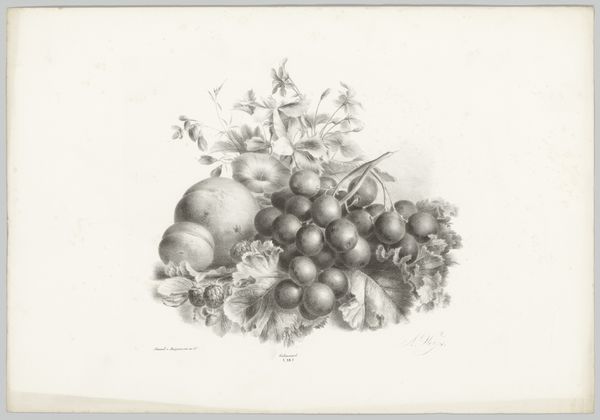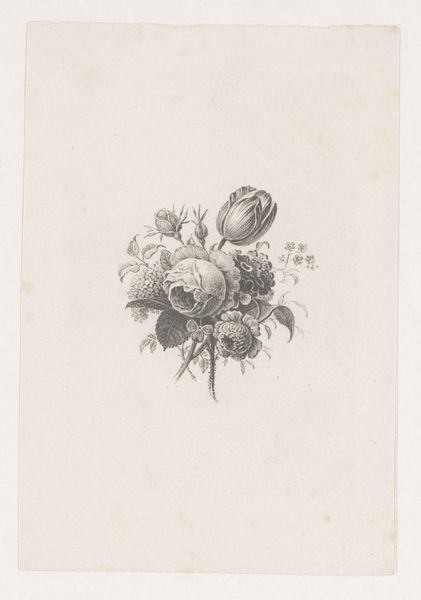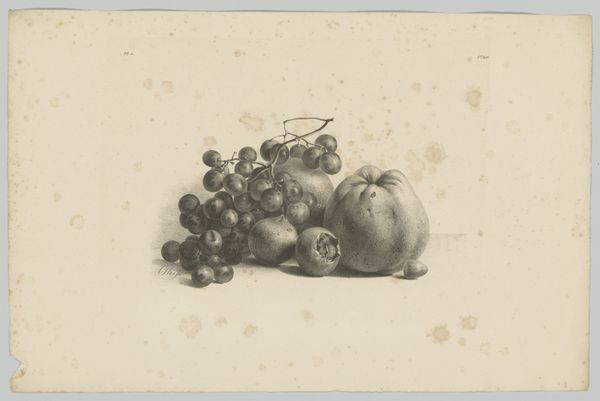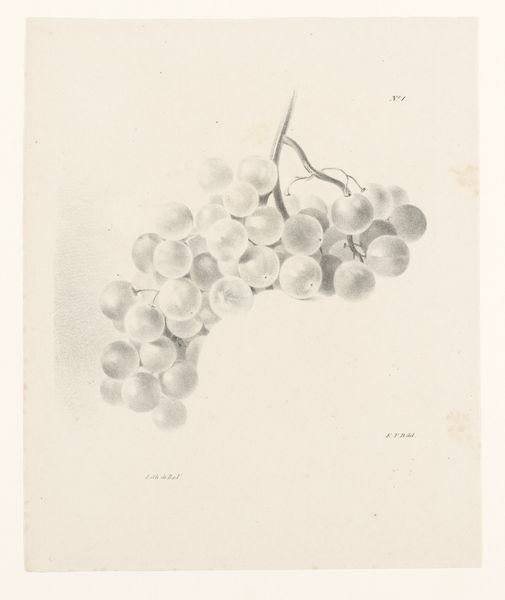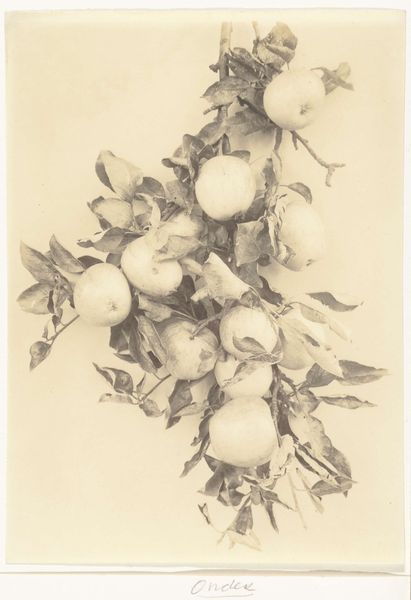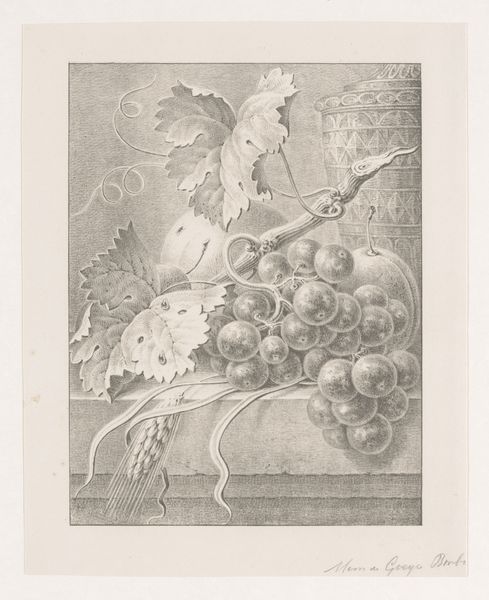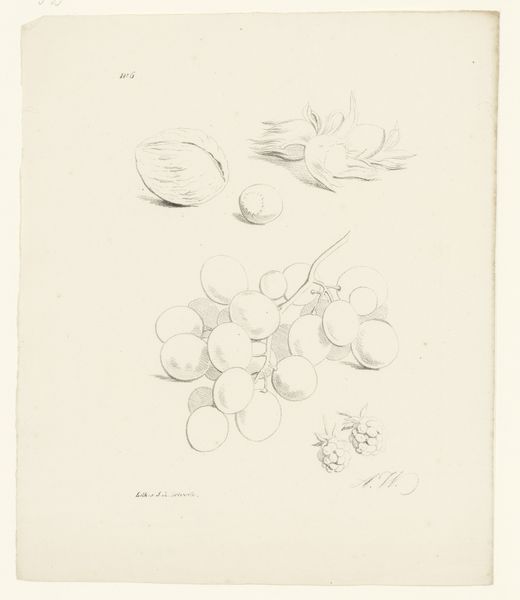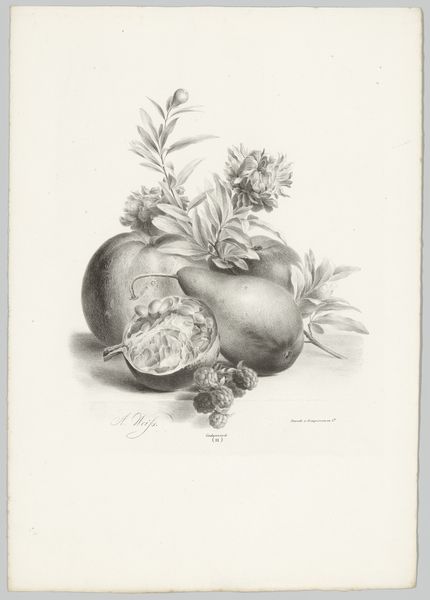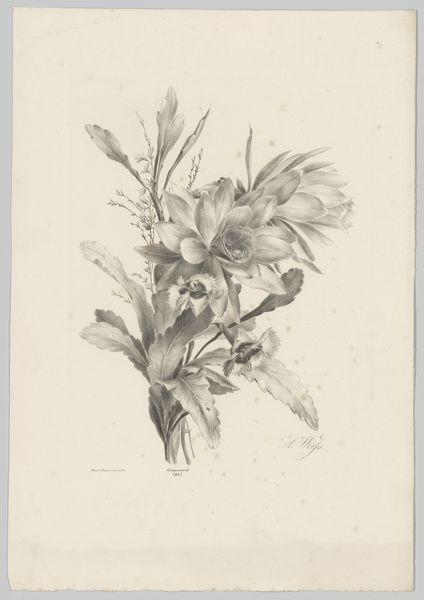
drawing, pencil
#
drawing
#
pencil
#
watercolour illustration
#
academic-art
#
botanical art
#
realism
Dimensions: height 243 mm, width 200 mm
Copyright: Rijks Museum: Open Domain
Curator: Maria Geertruida de Goeje-Barbiers gifts us with “Compositie van vruchten”, or “Composition of Fruits,” created sometime between 1811 and 1849 using pencil as her medium. Editor: My immediate reaction is one of serene, almost somber stillness. The muted grays, the soft, almost feathery quality of the pencil strokes—it’s incredibly delicate. It feels removed from the vibrant reality of ripe fruit. Curator: Indeed. Observe how she uses precise lines and meticulous shading to capture the texture of the grapes, the smoothness of what appears to be a peach, and the almost rough surfaces of the leaves. Her focus is clearly on representing form through tone. What we have is a study in contrast achieved by careful gradation of values. Editor: Yes, but considering the probable period and her gender, what social factors were influencing her choice to focus on this genre, or perhaps this particular way to do it? Were botanical studies considered an acceptable outlet for artistic expression for women at the time? It seems almost... scientific in its precise rendering. Curator: That is a relevant and essential question. Looking at it from a purely formal perspective, notice how the artist arranges the fruits and leaves in a pyramidal composition, giving the piece a sense of stability and balance. The interplay of light and shadow is key here—see how she models the forms, suggesting depth and volume on the flat surface. This, however, exists separately from the context in which she worked, though neither lens diminishes it, of course. Editor: Absolutely, but I think ignoring the socio-cultural backdrop impoverishes our reading. Works by female artists were often regulated, restricted to specific themes. Are these compositional techniques also attempts to work within acceptable norms, subtly challenging boundaries even through so-called safe subject matter like still-life? Curator: An insightful and persuasive reading. It's essential we continue analyzing the artwork within a comprehensive framework of the prevailing socio-cultural and economic circumstances. The composition truly becomes enlivened. Editor: And it challenges us to look beyond just the beautiful surface, doesn’t it? Thank you.
Comments
No comments
Be the first to comment and join the conversation on the ultimate creative platform.
